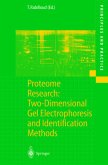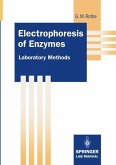Electrophoresis is the leading method among those used in the investigation of pro teins and nucleic acids. A paper on the study of these biopolymers without recourse to electrophoresis at each fractionation or characterization step is very unlikely to be encountered in the current scientific literature. This method enables separation of macromolecules according to characteristic features such as size (or molecular weight), shape, secondary structure and electric charge and these parameters can in fluence electrophoretic properties either separately or jointly. The physical background of this method is as follows. Macromolecules in a buf fer solution may become charged; the sign and magnitude of the total electrical charge depending on the pH of the medium. When such a solution is put into an insulated channel, e.g. in a glass tube, and a voltage applied at the ends of the chan nel, an electric field will be formed and direct current will pass through solution. The field strengthcan be defined as the potential difference at the ends of the chan nel (or its section) with respect to its length (v/cm). When exposed to an electrical field macromolecules will migrate towards the cathode or the anode according to their net charge and frictional force will limit the migration velocity.
Hinweis: Dieser Artikel kann nur an eine deutsche Lieferadresse ausgeliefert werden.
Hinweis: Dieser Artikel kann nur an eine deutsche Lieferadresse ausgeliefert werden.








